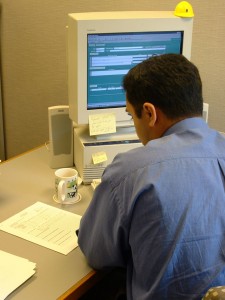 The best way to check credit card rates is to review your statement or check your credit card agreement. Each month, your credit card statement shows all of your charges made within a 30-day period; you also have a breakdown of the applicable APR or Annual Percentage Rate.
The best way to check credit card rates is to review your statement or check your credit card agreement. Each month, your credit card statement shows all of your charges made within a 30-day period; you also have a breakdown of the applicable APR or Annual Percentage Rate.
To find credit cards with decent rates, use the FREE credit card chaser today!
Most credit cards have more than one APR, so your credit card agreement is probably the best way to determine the differences. If you go to the Federal Reserve, you can find examples of credit card agreements and the types of APRs that apply.
For example, your primary APR is always for purchases. If you initially accepted an introductory APR, once the term ends, the variable APR will apply. If your credit card accepts balance transfers, there can be an APR equal to the purchase APR, or it may be slightly higher. Balance transfers are often included in the introductory offers and can start as low as 0%.
Cash advance APRs can be much higher than the purchase APR and the balance transfer APR. Most are between 20% and 23%. Finally, there is a penalty APR which can actually revert to your purchase APR if you begin to exhibit irresponsible behavior, like late payments, overextending, or bounced checks.
Finding Discrepancies with your APR
If you find discrepancies with your APR, first review your individual credit card agreement and make sure you have not committed any offenses that would cause a change or increase.
You should have at least six statements on hand to verify your payments were on time each month.
Try to locate any correspondence from the credit card company. According to the CARD Act of 2009, all credit card companies must provide a 45-day advance notice before increasing your APR. If you created an online account when you signed up for your credit card, check your records yourself. You can access past records and have a complete snapshot of your transactions, payment history and more.
Contact your credit card company and ask the representative to explain the increase. If your records do not match, escalate the issue to the management staff and wait for a resolution. You can also file a complaint with the Consumer Financial Protection Bureau.
 Reviewing your Credit History
Reviewing your Credit History
Your credit history plays an important role in determining your APR. To keep your interest rates as low as possible, you must be in tune with your credit history and credit score. Your credit report can be accessed each year by logging onto AnnualCredit.Report.com. The federal government allows every U.S. citizen to receive this detailed report once every 12 months free of charge.
Your credit report must be reviewed carefully and although most are accurate, there are times when errors can occur. If your credit report looks funny, contact the credit bureaus and ask for an investigation. Although the process may take some time, the results are worth waiting for. The reality is you are responsible for every entry on your report, even the inaccurate listings.
Credit Report vs. Credit Score
Credit reports and credit scores are both very different. While you need both to determine your financial health, you also need to know how to read and comprehend each one as separate entities.
Your credit report contains your entire history; it is maintained by credit bureaus, like TransUnion, Experian, and Equifax.
Your credit report also has details regarding your use of credit and how you pay your bills. Most lending institutions use this information to determine your risk group. If your credit history is positive, you are a low risk; if you have a poor credit history, you are a high risk. All of your personal information is included in your credit report.
Your credit score is a number, usually anywhere from 300 to 850 and is a culmination of information contained in your credit report. It includes the number of accounts you have open, how much you owe on each and if you have used them to the max.
Lenders tend to frown on consumers who take their credit cards to the limit. The less debt you have on your credit cards or other open accounts, the higher your credit score.
Once you understand how to balance open credit without going over the limit or making minimum payments, you should see your credit score rise. Over time, the low score will increase and you should qualify for the lowest interest credit cards available.
Utilize the FREE credit card finder to locate credit cards today!








